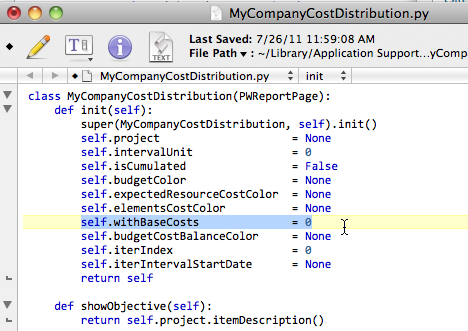Python Template Library

The most important concern is whether you can live with the syntax the templates require. Second and third (depending on your application needs) would be speed and ease of distribution. I looked at all of them, but the only syntax I could stand was. Jinja has the advantage of supporting a lot of Python constructs, so it's very easy to add snippets of functionality to the templates as needed, without coding special tags. Most of what requires tags in other template systems is handled by macros in Jinja. Of course, if you're looking for something easy and quick, it's hard to beat the in the core language.
If you're working with X[HT]ML, one of the tag-based templating systems that can leave you with well-formed templates is a good move. (It can produce other formats, but if your emphasis isn't XML or HTML it'd not be a sensible choice.) I have an intense dislike for templating systems that claim to “help you separate business logic and presentation” by limiting expressions to their own Little Language. Java Httpclient Download File Example Linux. They don't seem to understand that there is such as thing as “presentation logic”, and it can get sometimes complicated enough to need a Real Language like Python to run it. Having you kick out your presentation logic into the app with the business logic is so not a win. (The limited expression separate mini-language approach made some sense in JSP's ‘EL’, as Java is too annoyingly verbose to use in a templating library. But we've got Python!
It's perfect for writing expressions in templates as it is; chopping functionality out and making the user learn another new language gains you nothing.).
Mako Templates for Python. Mako is a template library written in Python. It provides a familiar, non-XML syntax which compiles into Python modules for maximum. Otomax Keygen Photoshop. Introduction¶ This package uses 2 major packages: python-docx for reading, writing and creating sub documents; jinja2 for managing tags inserted into the template docx.
The most important concern is whether you can live with the syntax the templates require. Second and third (depending on your application needs) would be speed and ease of distribution. I looked at all of them, but the only syntax I could stand was. Jinja has the advantage of supporting a lot of Python constructs, so it's very easy to add snippets of functionality to the templates as needed, without coding special tags.
Most of what requires tags in other template systems is handled by macros in Jinja. Of course, if you're looking for something easy and quick, it's hard to beat the in the core language. If you're working with X[HT]ML, one of the tag-based templating systems that can leave you with well-formed templates is a good move. (It can produce other formats, but if your emphasis isn't XML or HTML it'd not be a sensible choice.) I have an intense dislike for templating systems that claim to “help you separate business logic and presentation” by limiting expressions to their own Little Language. They don't seem to understand that there is such as thing as “presentation logic”, and it can get sometimes complicated enough to need a Real Language like Python to run it. Having you kick out your presentation logic into the app with the business logic is so not a win. Asce 7 10 Chapter 30 Pdf Download.